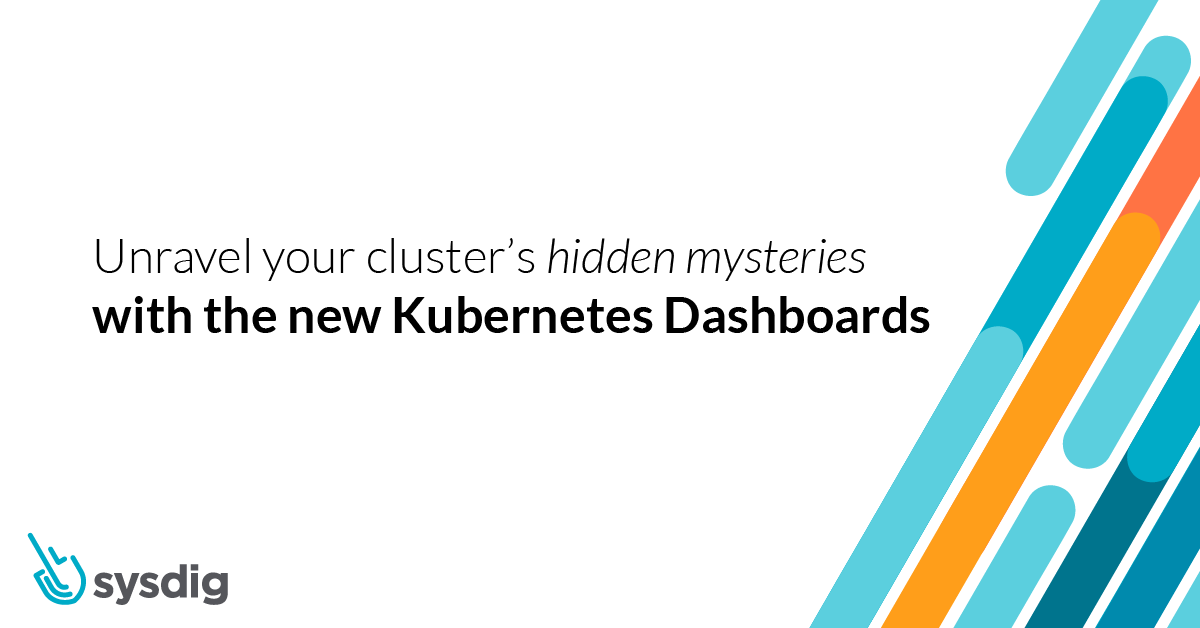We, at Sysdig, use Kubernetes ourselves, and also help hundreds of customers dealing with their clusters every day. We are happy to share all that expertise with you in the Kubernetes Dashboards. With the right dashboards, you won’t need to be an expert to troubleshoot or optimize your cluster.
Kubernetes Dashboards aren’t just handy in troubleshooting situations. They are also a very useful resource for doing capacity planning. They can help you ensure you’re not having extra costs due to an over-allocation of platform resources. Also, you will be certain that the platform can support new workloads.
In this article, we are introducing the new Kubernetes Dashboards in Sysdig Monitor, which will help you get a better understanding of your Kubernetes cluster status. The new Kubernetes Dashboards not only offer you a vast collection of dashboards but also guide you through them, making it easier to troubleshoot different situations.
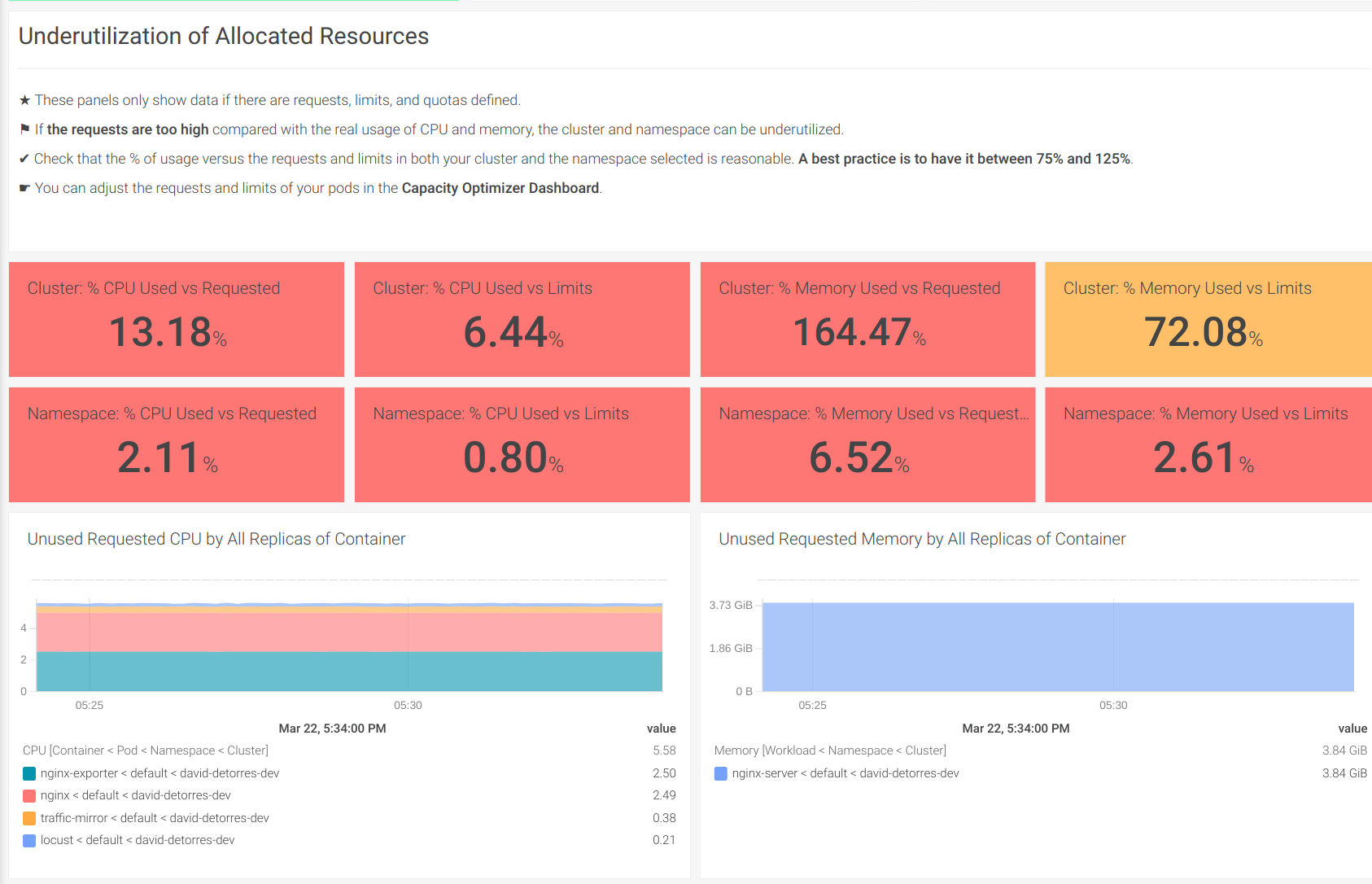
A more intuitive way of monitoring your cluster
Kubernetes Dashboards in Sysdig Monitor aren’t just a bunch of metrics in a panel; they are organized to be use-case-oriented. This way, they build a well structured, opinionated guide through your Kubernetes cluster.
Reading the tips Sysdig Monitor offers in the Kubernetes Dashboards helps troubleshoot problems faster, understand why they are happening, and get to the root cause right away.
With Kubernetes Dashboards, you won’t need to be a Kubernetes expert to increase the performance and availability of your clusters.
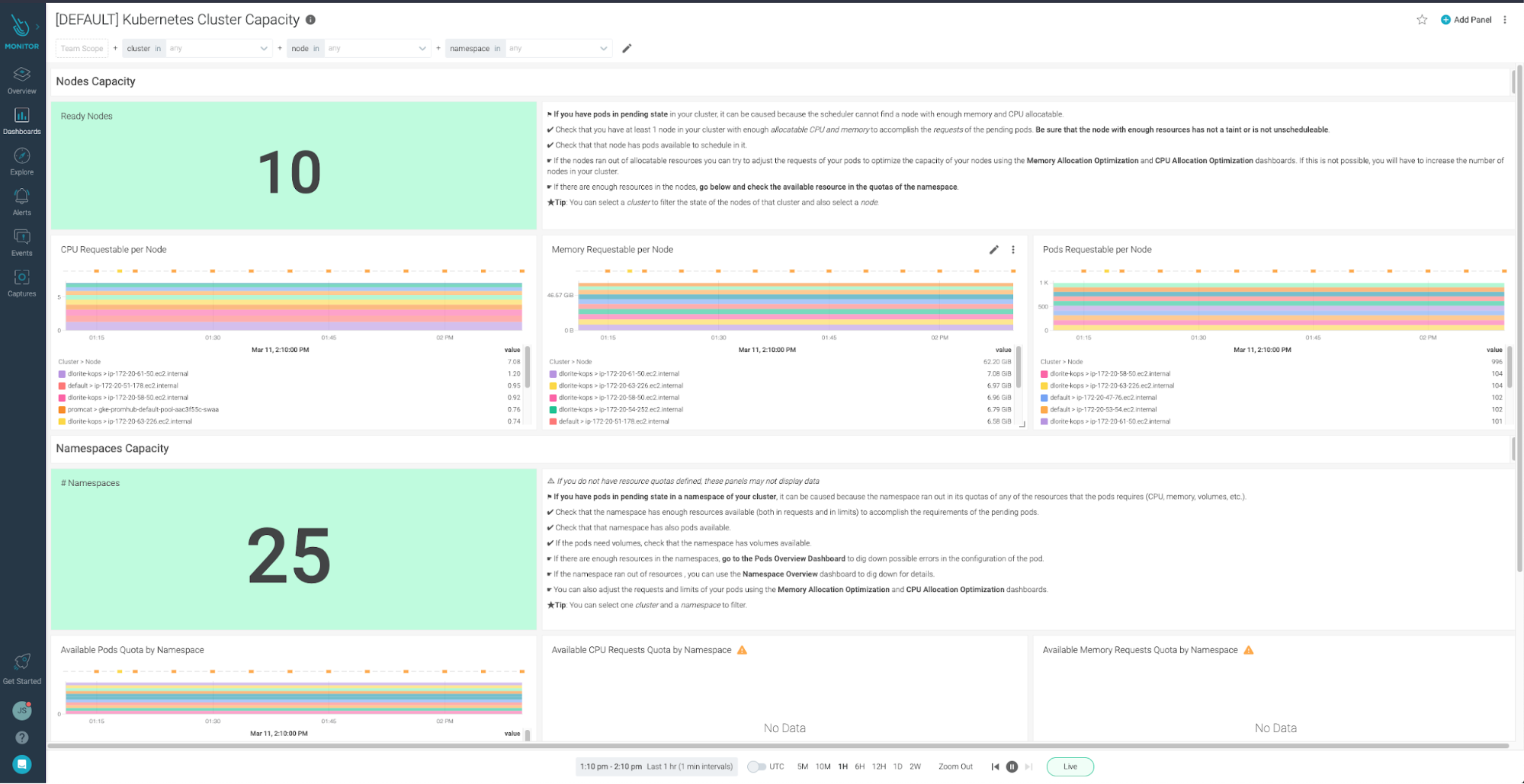
Take troubleshooting to the next level
Kubernetes dashboards in Sysdig Monitor are fully Kubernetes native. You can start using and customizing them in no time.
Imagine that someone in your team updates an image with a breaking change. Suddenly, some Pods begin restarting in a loop with a CrashLoopBackOff error. Quickly, you go to the Kubernetes Resources/Deployments dashboard and see there are some pods not ready.
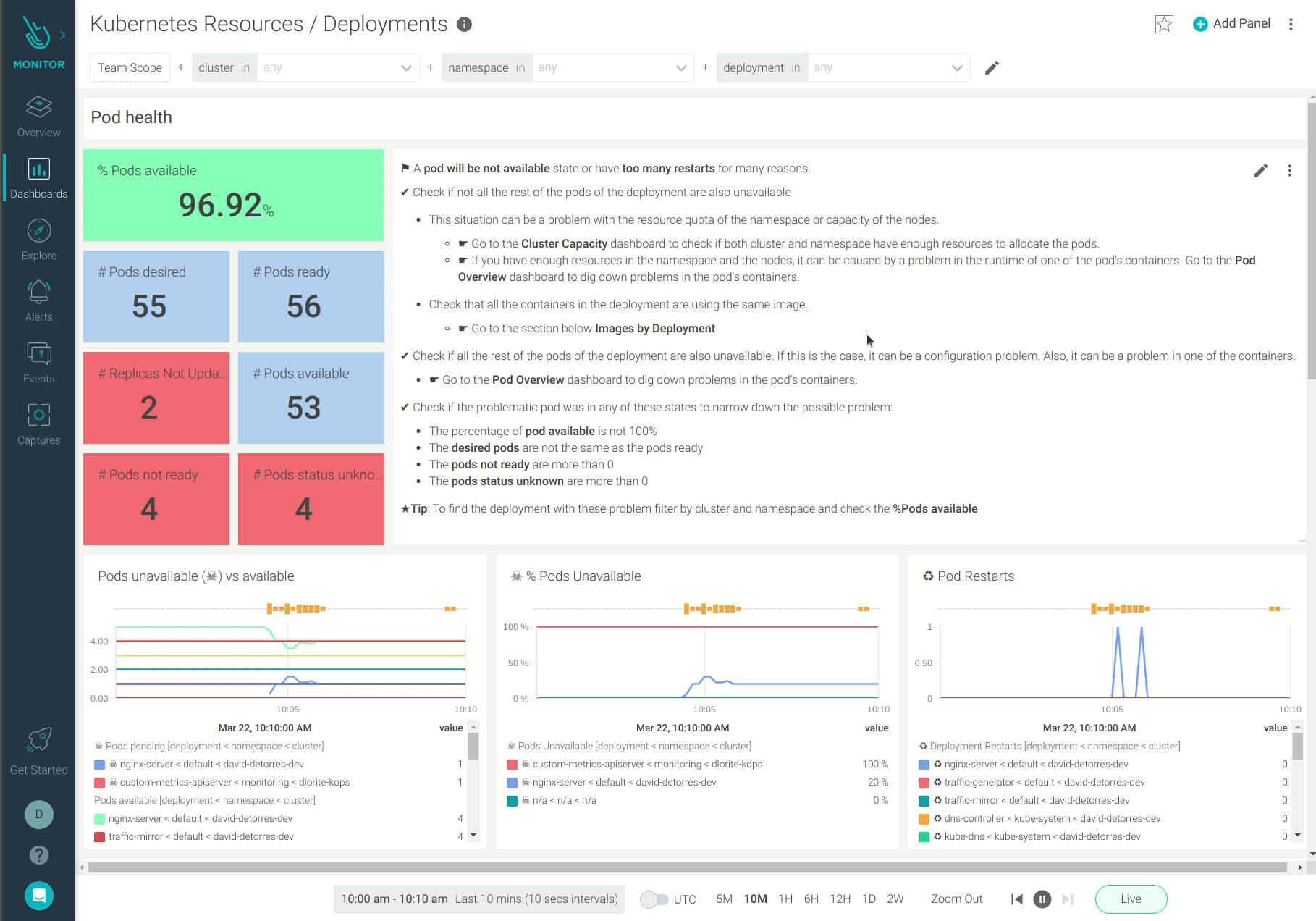
Then, you learn that some of the containers in the same workload are using different images thanks to:
- All the information that Sysdig is guiding you through in the dashboard.
- The Event Overlay, which graphically shows you an event-based context to troubleshoot the issue.
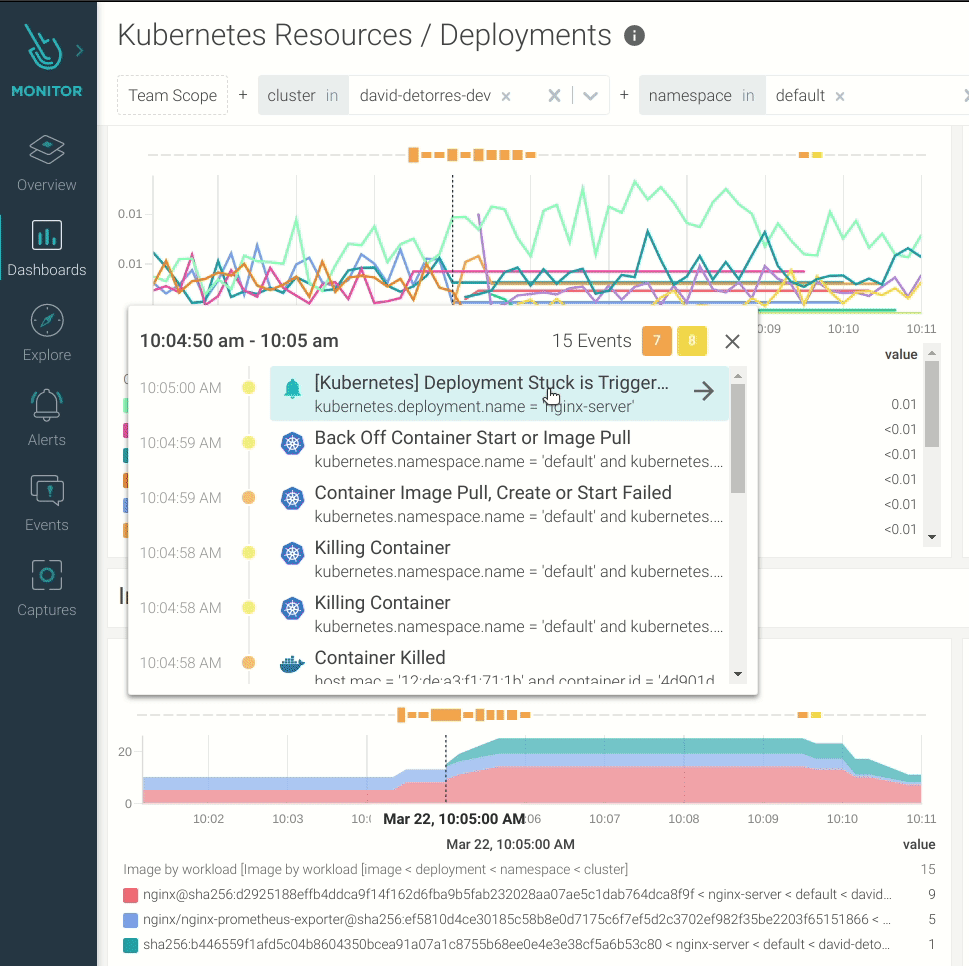
Finding the needle in a haystack
Comparing the behavior of different containers in different clusters is as easy as a mouse click in the top filter bar of the Kubernetes Dashboards. It doesn’t matter if you use multi-region and/or multi-provider.
This way, Kubernetes Dashboards let you check that one app is working well through all of your infrastructure. Also, the dashboards let you troubleshoot potential issues by drilling down from the clusters to a particular container.

We help you optimize and allocate resources
Critical situations aren’t the only circumstances when a DevOps engineer needs to check out the Kubernetes dashboards. Using the dashboards to improve cluster configuration is something every SRE should do once in a while.
At Sysdig, we are Kubernetes experts. You can trust us not only for troubleshooting your cluster, but also for configuring it to get the most out of your infrastructure.
The Capacity Optimizer dashboard helps you configure the optimal resource requests and limits for CPU and memory by showing the suggested best practices and meaningful tips, allowing you to set the better values for the studied containers.
Using the Capacity Optimizer dashboard is key to avoid extra-costs in your infrastructure and safely allocate resources for your cluster.
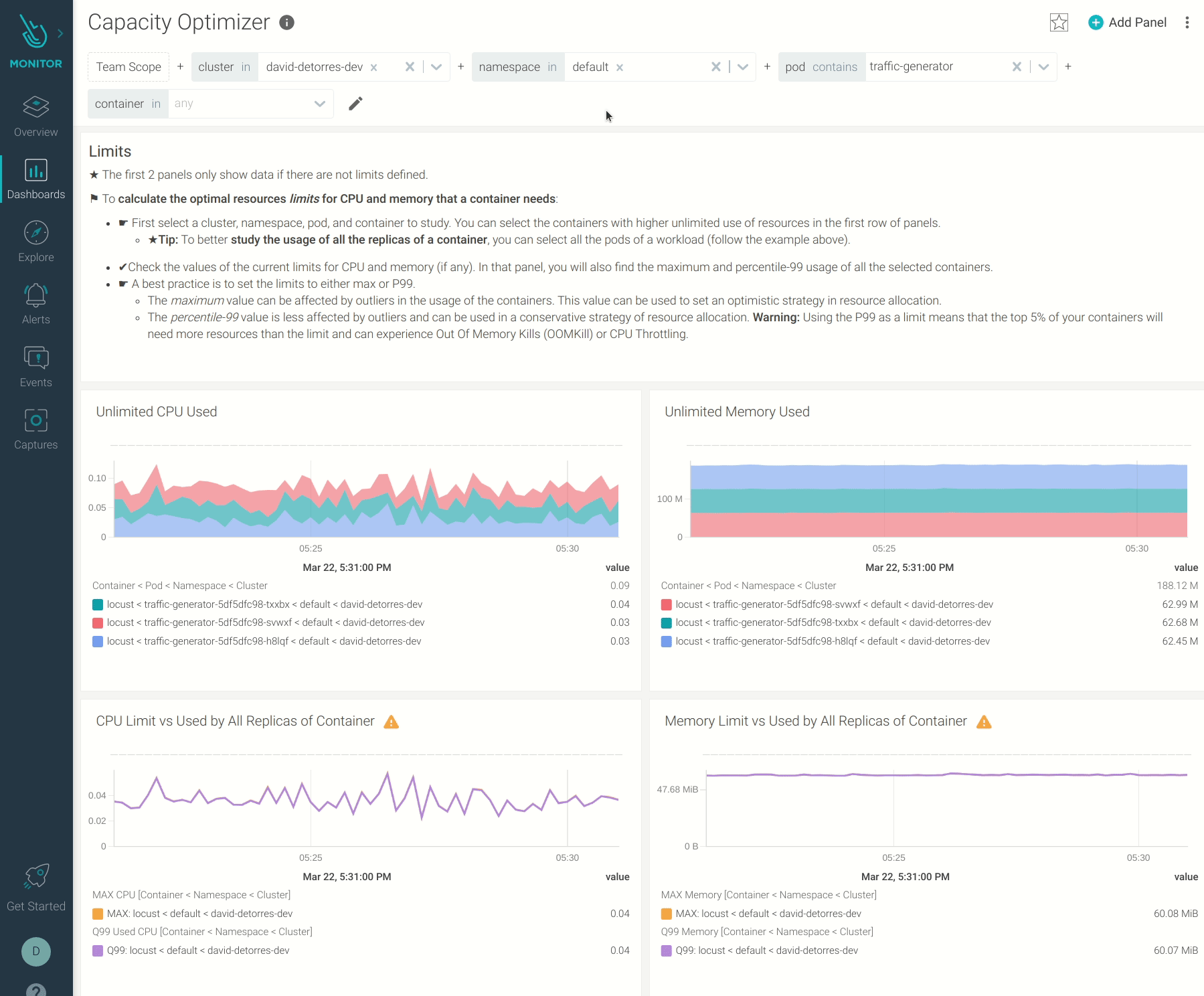
When you are creating a new workload, you probably don’t know what the state of the cluster is and if your pods are going to fit. You should not only be examining the CPU and memory requestable, but also the CPU and memory free in each node.
Sometimes there is space in the cluster as a whole but not in each node. Checking the state of each node, you can prepare your workloads in advance to make sure they are sized correctly before you deploy.
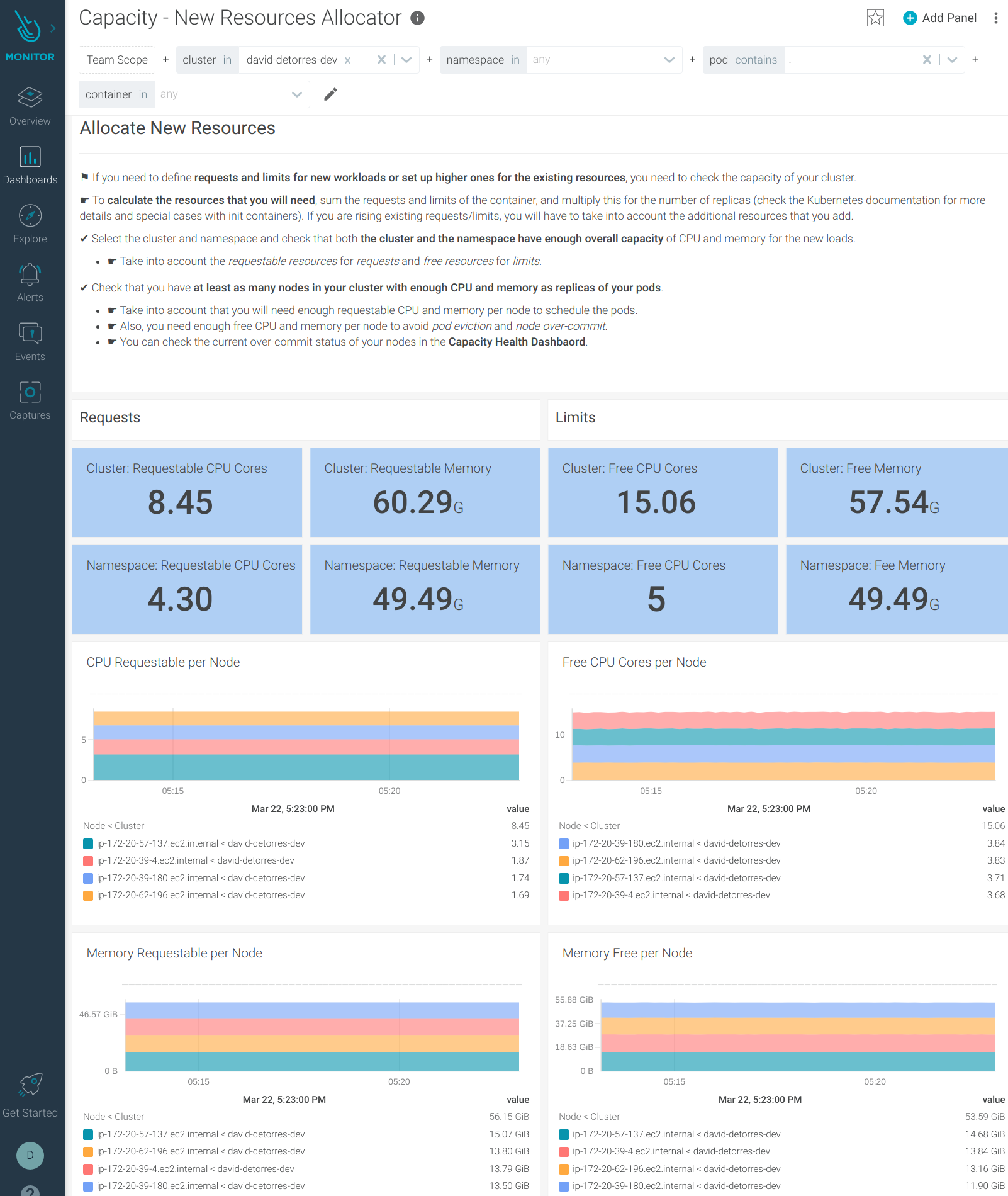
Focus on what is important
We are shipping all these dashboards in the latest release of our hosted SaaS service, and they work with your Kubernetes cluster out-of-the-box.
Sysdig Monitor won’t just configure your cluster dashboards for you. It will also help you understand what is happening and why, by guiding you through all the processes.
This feature is available to existing customers starting in the Sysdig US-East region, and will be rolled out to our other regions over the next couple of weeks. In the meantime, see ServiceVision for Prometheus in action in our Supercharging Kubernetes Labels and Metrics webinar!


